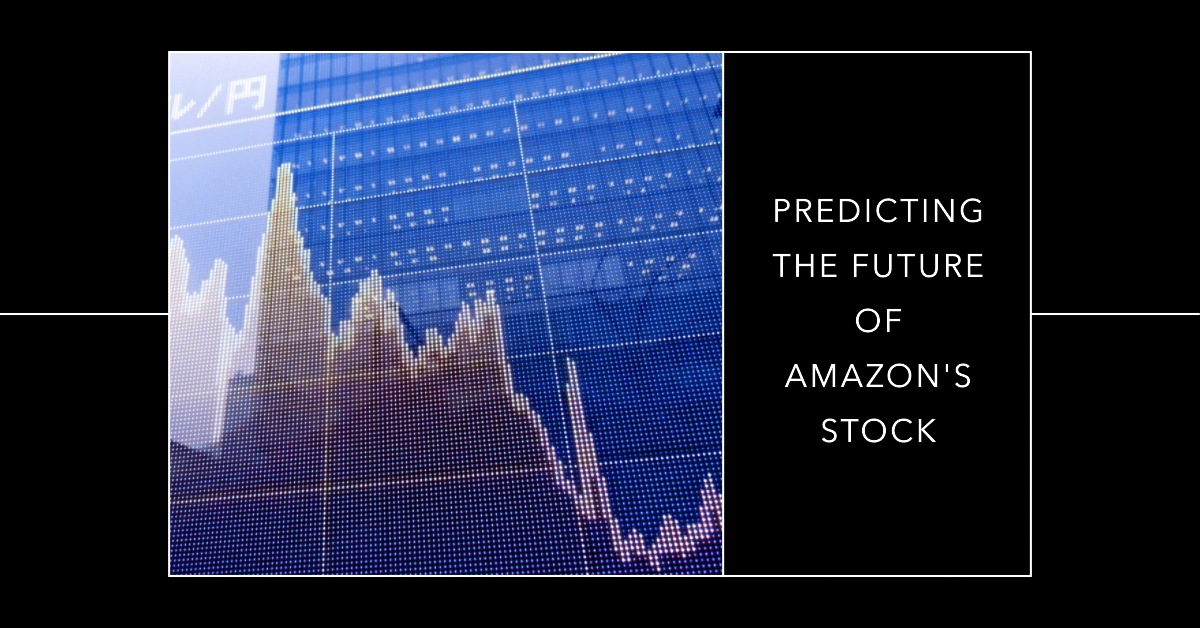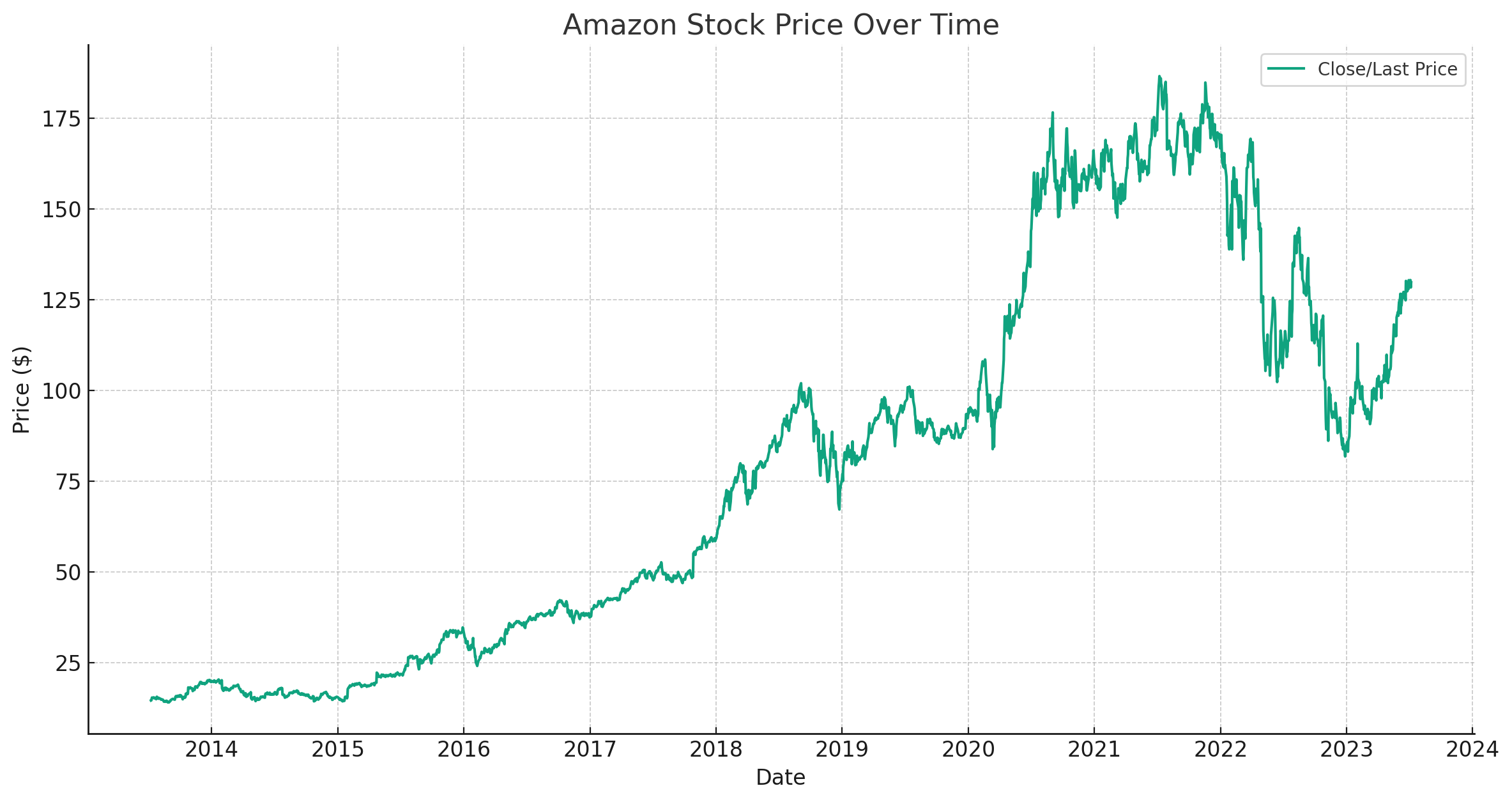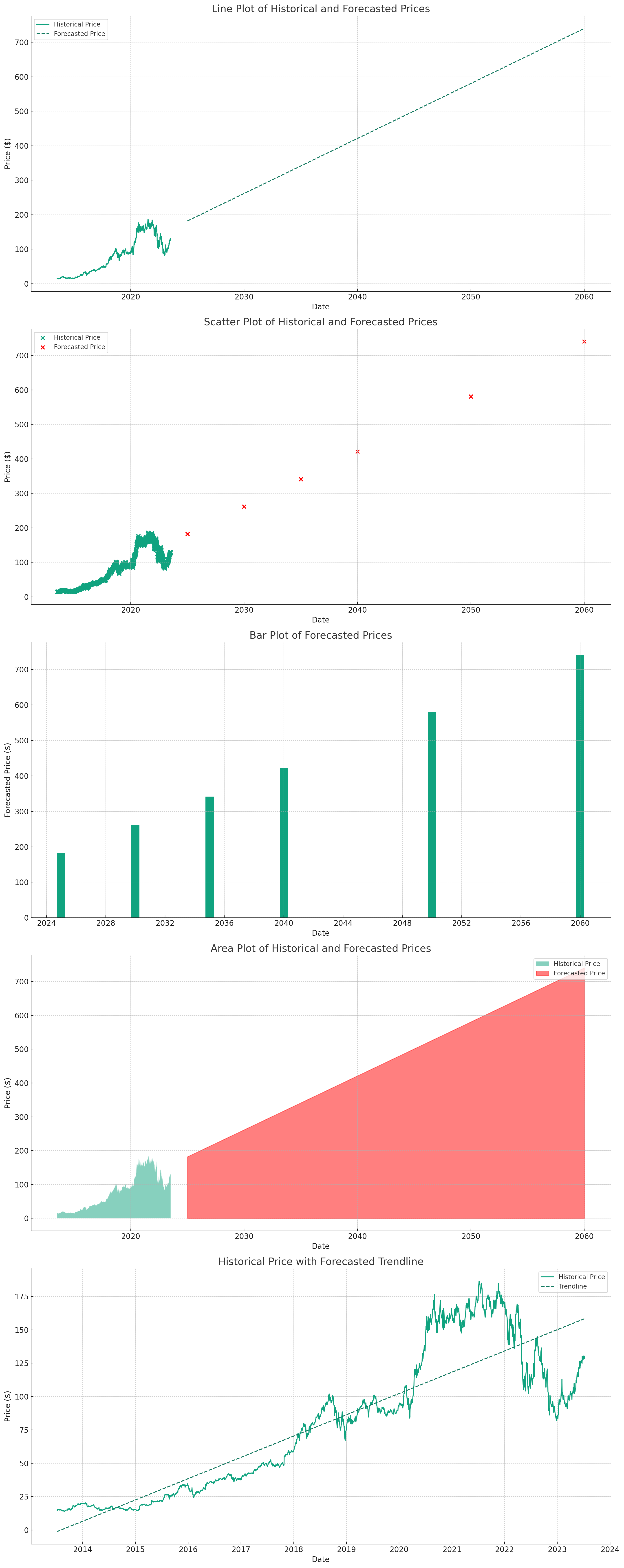Amazon Stock Price Prediction 2025, 2030, 2035, 2040, 2050, and 2060

As one of the world’s most influential and successful companies, Amazon commands significant interest from investors, market analysts, and the general public alike. Founded by Jeff Bezos in 1994 as an online bookstore, Amazon has grown into a multinational technology company that is at the forefront of e-commerce, digital streaming, cloud computing, and artificial intelligence. Today, Amazon’s stock (AMZN) is one of the most closely watched and frequently traded in the world.
Understanding and predicting the future behavior of Amazon’s stock price is of great interest to many. Accurate stock price predictions can inform investment decisions, guide corporate strategy, and even influence the broader economy. However, predicting stock prices is no easy task. It involves analyzing complex patterns in historical data and making educated guesses about future market conditions and company performance.
The objective of this article is to provide a detailed analysis of Amazon’s historical stock price data and use this analysis to make predictions about the company’s future stock prices. Using machine learning techniques, we will attempt to discern patterns in the data that can inform these predictions.
Disclaimer: The information provided in this article is for informational purposes only. It should not be considered financial advice. You should consult with a financial advisor or other professional to determine what may be best for your individual needs. Do not make any investment decisions based solely on the information in this article.
Understanding Stock Market Data
To make sense of stock market data, it’s important to understand what the various terms mean:
- Open: The price at which a stock starts trading when the market opens.
- High: The highest price at which the stock traded during the trading day.
- Low: The lowest price at which the stock traded during the trading day.
- Close/Last: The final price at which the stock traded when the market closed for the day.
- Volume: The number of shares that were traded during the trading day.
Each of these data points provides valuable information about the stock’s performance and the market’s perception of the company. For example, a high trading volume often indicates a strong investor interest in the stock, while significant changes in the opening or closing price can signal shifts in the company’s valuation. By analyzing these data points over time, we can identify trends, detect patterns, and make predictions about future stock prices.
Source of the Data
The data used in this analysis is sourced from NASDAQ, one of the world’s leading stock exchanges where Amazon’s stock is listed and traded. NASDAQ provides a wealth of information about the stocks it hosts, including historical price data that can be used for analyses like the one we’re conducting.
This historical price data gives us a detailed view of Amazon’s stock performance over time, including the opening price, highest price, lowest price, closing price, and volume of trades for each trading day. By sourcing our data directly from NASDAQ, we can ensure that our analysis is based on accurate and reliable information.
Data Cleaning and Preparation
Before we can analyze this data, we first need to clean and prepare it. Data cleaning is a crucial step in any data analysis process. It involves correcting or removing any errors or inconsistencies in the data that could skew our results or lead to inaccurate conclusions.
In our case, data cleaning involved several steps:
- Removing any extraneous characters from the price data, such as dollar signs.
- Converting the date data into a numerical format that our analysis tools can handle.
- Checking for any missing or incomplete data and deciding how to handle these cases.
By carefully cleaning and preparing our data, we can ensure that our analysis is as accurate and meaningful as possible.
Data Analysis

The data analysis process starts by computing descriptive statistics for the Open, High, Low, Close/Last, and Volume fields of the Amazon stock data. These statistics, which include measures such as mean, median, and standard deviation, provide a comprehensive summary of the dataset.
- The mean gives us the average stock price or trading volume, providing a single value that represents the center of the data.
- The median is the middle value in the dataset when sorted in ascending order. It provides a measure of central tendency that is not skewed by outliers.
- The standard deviation measures the dispersion of the dataset. In our context, a high standard deviation in stock prices indicates a high volatility in Amazon’s stock.
These statistics are then interpreted to understand the overall behavior of Amazon’s stock price. For instance, a steadily increasing mean over time might suggest a long-term upward trend in the stock price.
The visual representation of the data takes the form of various plots. Line plots and scatter plots are used to show the change in stock prices over time, while bar plots show the predicted prices for future years. These graphs provide a visual insight into the trends and patterns in the stock price data.
Methodology for Stock Price Prediction
For predicting Amazon’s stock price, we use a technique known as linear regression. Linear regression is a statistical method that models the relationship between a dependent variable (in this case, the Close/Last price) and one or more independent variables (in this case, the date).
Linear regression was chosen for its simplicity and effectiveness in situations where the dependent and independent variables have a linear relationship. In the case of stock price data, it can often provide a good first approximation of the overall trend.
To train the linear regression model, the date was converted to a numerical format and used as the independent variable, while the Close/Last price served as the dependent variable. The model was then fit to the historical data, allowing it to learn the relationship between the date and the stock price. This trained model was then used to make predictions about future stock prices.
Amazon Stock Price Predictions
Based on our linear regression model, we have made the following stock price predictions for Amazon:

- The predicted stock price for 2025 is approximately $182.04.
- For 2030, the predicted stock price is approximately $261.77.
- In 2035, the predicted stock price is approximately $341.50.
- By 2040, the predicted stock price is approximately $421.23.
- In 2050, the predicted stock price rises to approximately $580.73.
- By 2060, the predicted stock price reaches approximately $740.19.
These predictions are visualized in a line plot that shows the historical stock prices and the predicted future prices. The visualization helps to see the overall trend and compare future predictions with past performance.
The justification for each prediction is based on the assumption that the upward trend observed in the historical data will continue into the future. The predictions are a direct result of the linear trendline fit to the historical data.
Limitations and Considerations
While the linear regression model provides a good starting point for predicting future stock prices, it’s important to note its limitations. The model assumes a constant rate of change, which may not hold true in reality. Stock prices can be influenced by many factors that a linear regression model does not take into account, such as:
- Changes in market conditions.
- The financial performance of the company.
- Global economic trends and events.
- Changes in technology and consumer behavior.
These factors can lead to sudden shifts or changes in trend that the model cannot predict. Therefore, while our predictions provide a broad outlook based on past trends, they should not be the sole basis for making investment decisions. As with all predictions, they should be used with caution.
Implications for Investors
The stock price predictions provided in this article can serve as a useful tool for investors. They offer a potential outlook on Amazon’s stock price based on past trends, providing insights that can inform investment strategies. For instance, the predicted upward trend could suggest a potential long-term investment opportunity.
However, it is important to exercise caution when using these predictions. As mentioned earlier, the linear regression model used for these predictions has its limitations. It does not consider the many complex factors that can influence stock prices, such as market volatility, economic indicators, or the company’s future performance. Therefore, these predictions should not be the sole basis for any investment decisions. Instead, they should be one of many tools used in a comprehensive and well-rounded investment analysis.
Conclusion
In conclusion, our analysis of Amazon’s historical stock price data suggests a general upward trend. Using a simple linear regression model, we have projected this trend into the future, resulting in predictions for the stock price in 2025, 2030, 2035, 2040, 2050, and 2060.
While these predictions provide a broad outlook based on past trends, they come with the caveat that the reality of the stock market can often be more complex. Nevertheless, they offer a starting point for those interested in the future trajectory of Amazon’s stock price. As always in the world of investing, it is crucial to consider a wide range of information and to understand the inherent uncertainties involved in predicting future events.